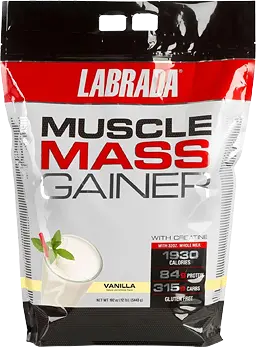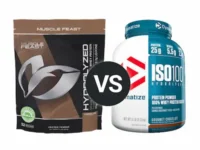Knowledge BaseYou're Questions Answered
Does whey protein powder expire?
Whey protein powder is a popular dietary supplement made from the liquid byproduct of cheese production. Like all food products, whey protein powder does have an expiration date. While it is generally safe and effective for consumption for a certain period, its quality and nutritional value can degrade over time. Below, we explore the factors affecting the shelf life of whey protein powder, signs of expiration, and best practices for storage.
Shelf Life of Whey Protein Powder
1. Expiration Date
Most whey protein powders come with an expiration date or "best by" date printed on the packaging. This date indicates the period during which the product is expected to retain its best quality and nutritional value. Typically, unopened whey protein powder can last anywhere from 1 to 2 years from the date of manufacture1. After this period, while the product may not necessarily be harmful, its quality may decline.
2. Factors Affecting Shelf Life
- Packaging: The packaging of whey protein powder plays a significant role in preserving its quality. Products stored in airtight, opaque containers are better protected from light, air, and moisture, which can degrade the product over time. Some products may use nitrogen flushing to reduce oxygen exposure and extend shelf life.
- Storage Conditions: Proper storage is crucial for maintaining the quality of whey protein powder. It should be stored in a cool, dry place, away from direct sunlight and moisture. High temperatures and humidity can accelerate the degradation process, potentially leading to spoilage.
- Ingredients and Additives: The presence of certain ingredients, such as flavorings, sweeteners, or preservatives, can also impact the shelf life. Some additives may degrade faster than the protein itself, affecting the overall quality of the product.
Signs of Expiration
Even if the product is within its expiration date, it's important to check for signs of spoilage, which can include:
- Unpleasant Odor: A sour or rancid smell can indicate that the whey protein powder has gone bad.
- Change in Color or Texture: Clumping, discoloration, or an unusual texture can be signs of degradation.
- Off Taste: A bitter or off taste suggests that the product is no longer fresh.
Best Practices for Storage
To maximize the shelf life of whey protein powder, follow these storage tips:
- Keep the Container Sealed: Always reseal the container tightly after each use to prevent exposure to air and moisture.
- Store in a Cool, Dry Place: A pantry or cupboard away from heat sources and direct sunlight is ideal. Avoid storing protein powder in a humid environment, such as a bathroom or near a stove.
- Use a Dry Scoop: Ensure that the scoop used for measuring the powder is dry to avoid introducing moisture into the container.
- Hoffman, J. R., & Falvo, M. J. (2004). Protein–which is best? Journal of Sports Science & Medicine, 3(3), 118-130.
- Boirie, Y., Dangin, M., Gachon, P., Vasson, M. P., Maubois, J. L., & Beaufrère, B. (1997). Slow and fast dietary proteins differently modulate postprandial protein accretion. Proceedings of the National Academy of Sciences, 94(26), 14930-14935.
- Gibney, M. J., Lanham-New, S. A., Cassidy, A., & Vorster, H. H. (2009). Introduction to human nutrition. John Wiley & Sons.
Related Questions
Related Reviews

Your Answer
We are a participant in the Amazon Services LLC Associates Program, an affiliate advertising program designed to provide a means for us to earn fees by linking to Amazon.com and affiliated sites.



